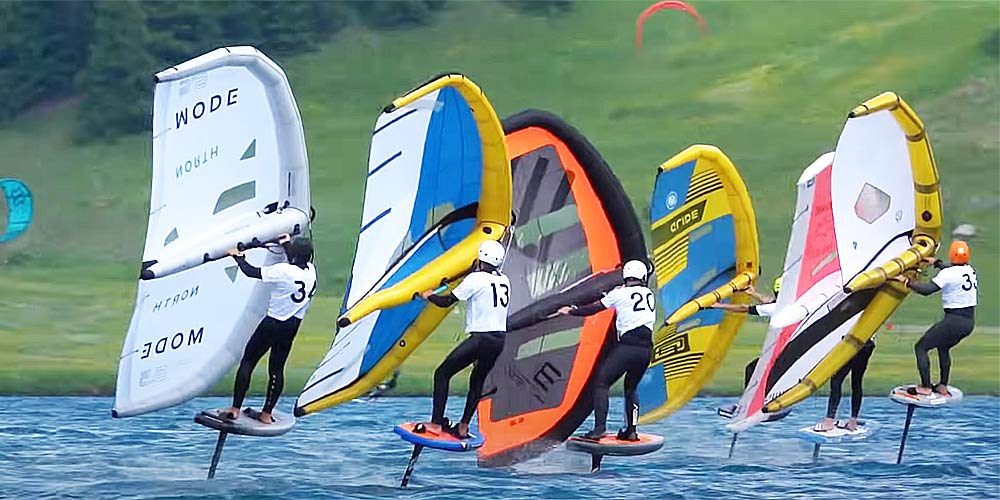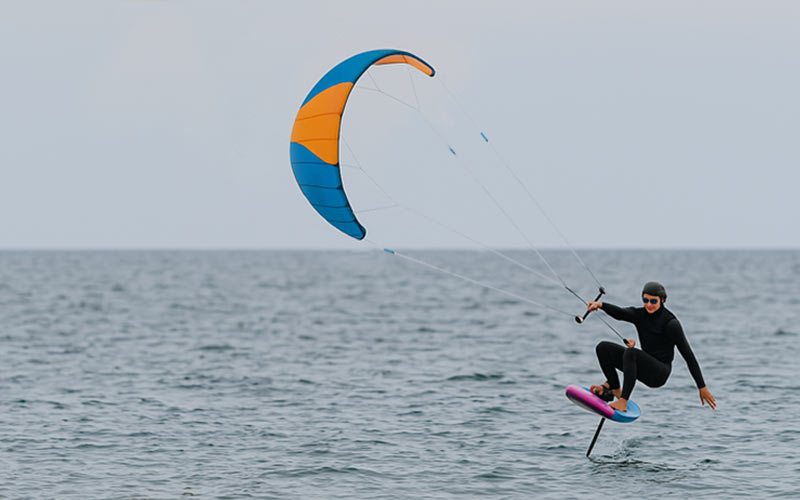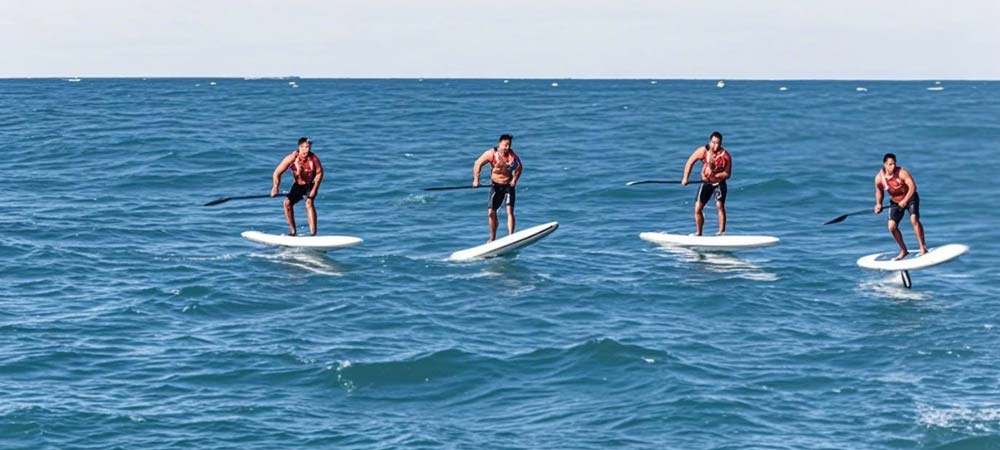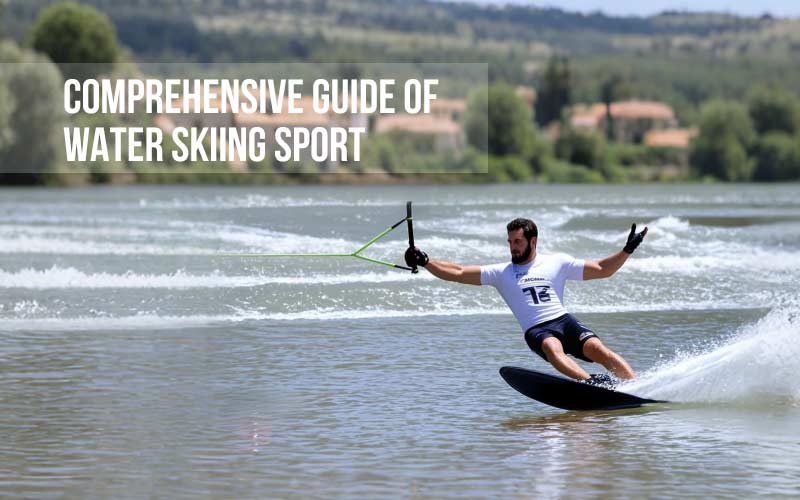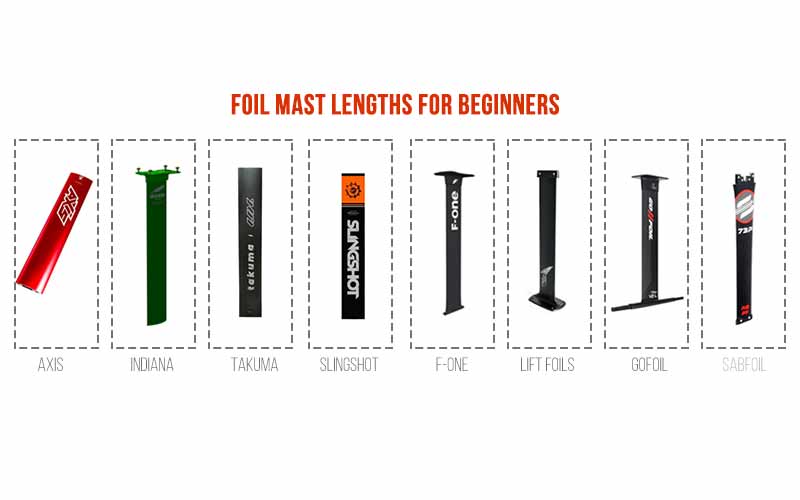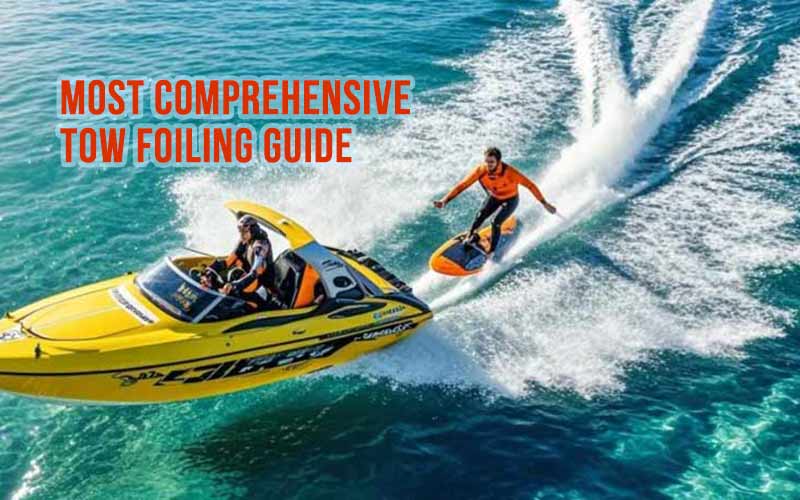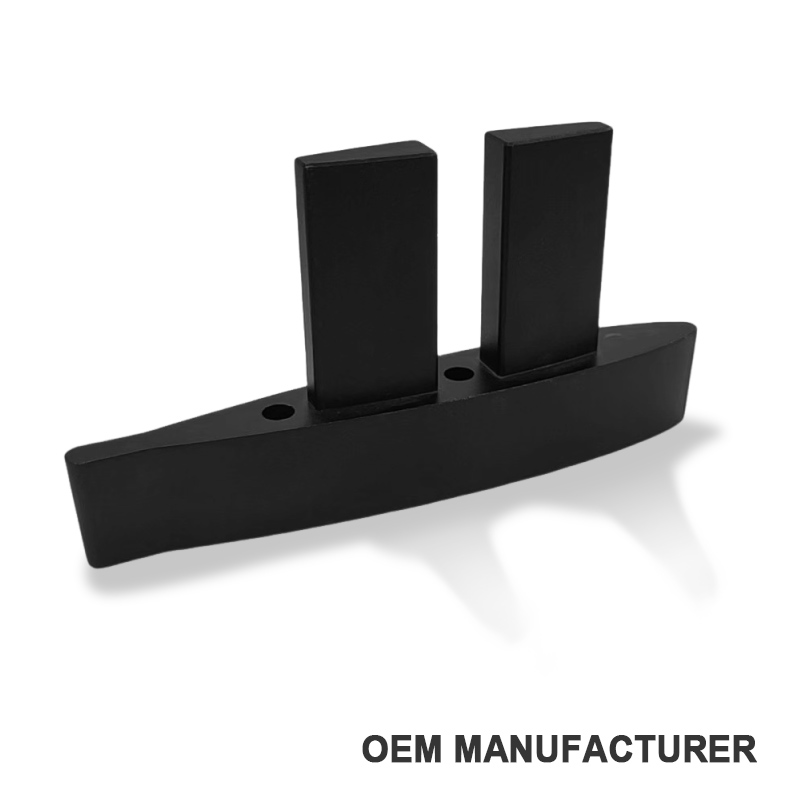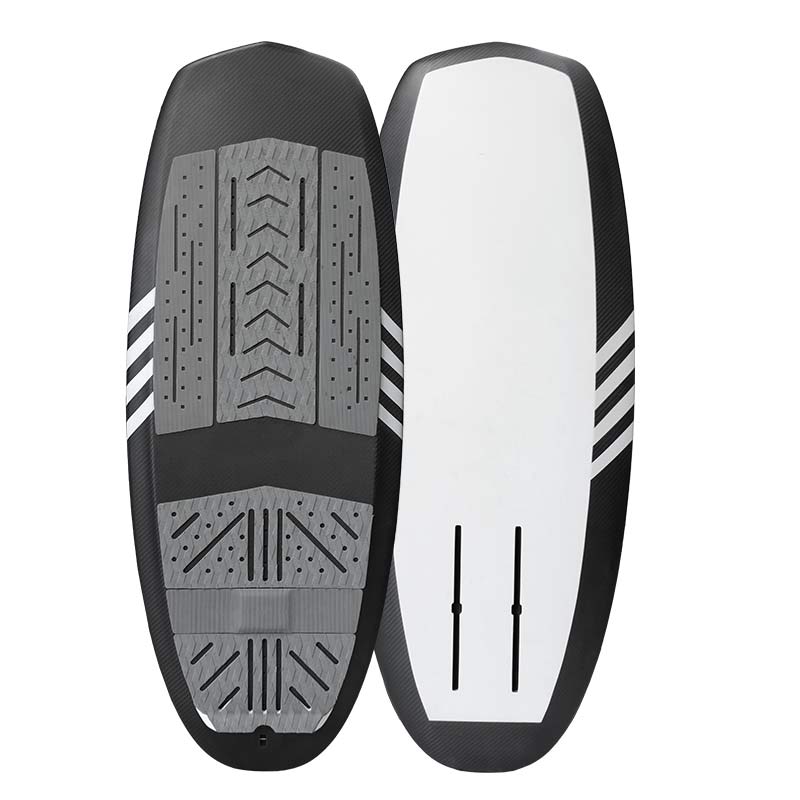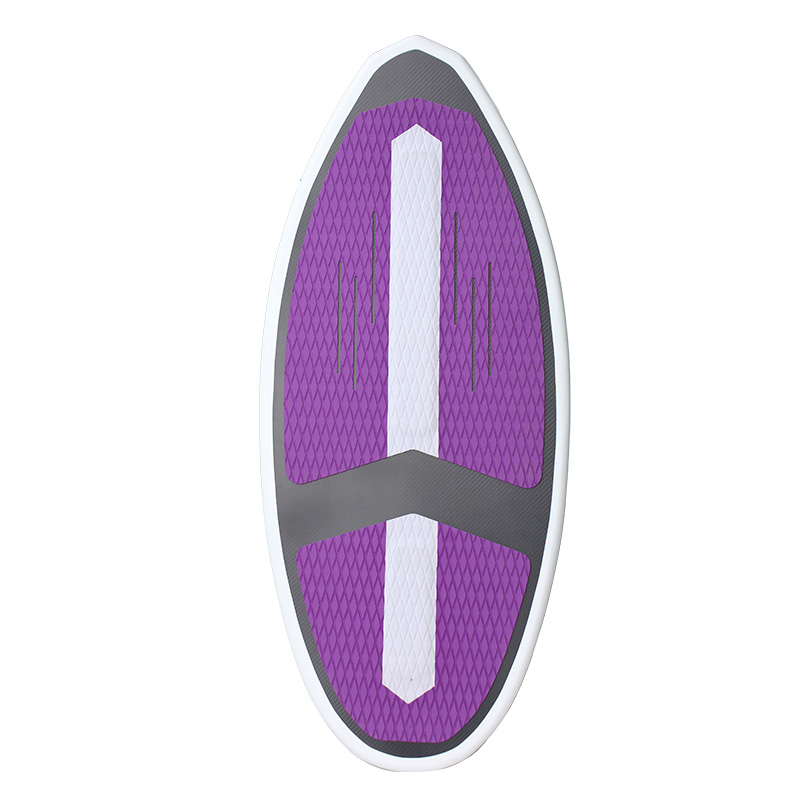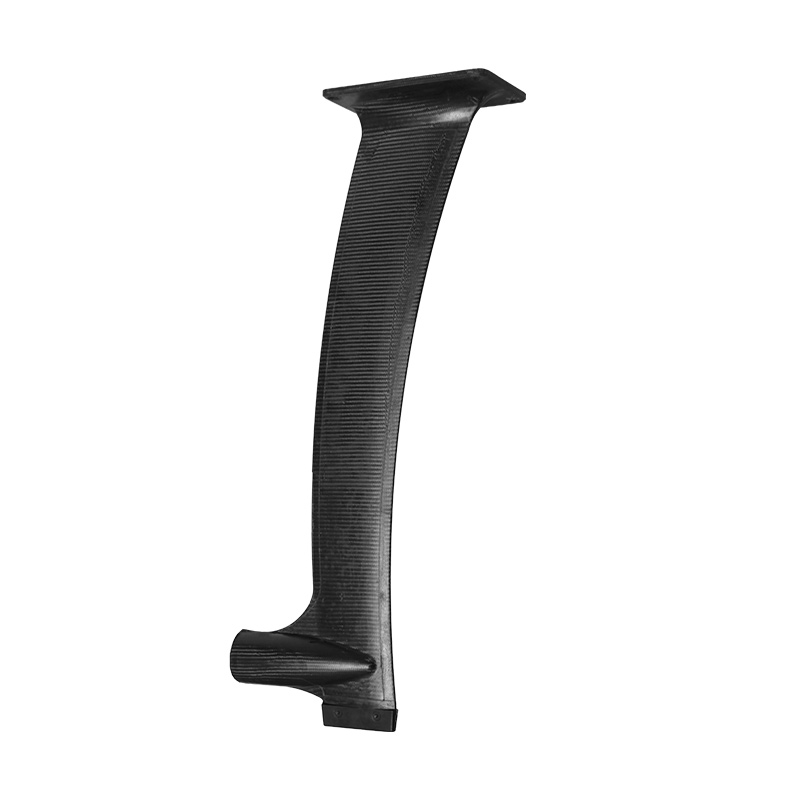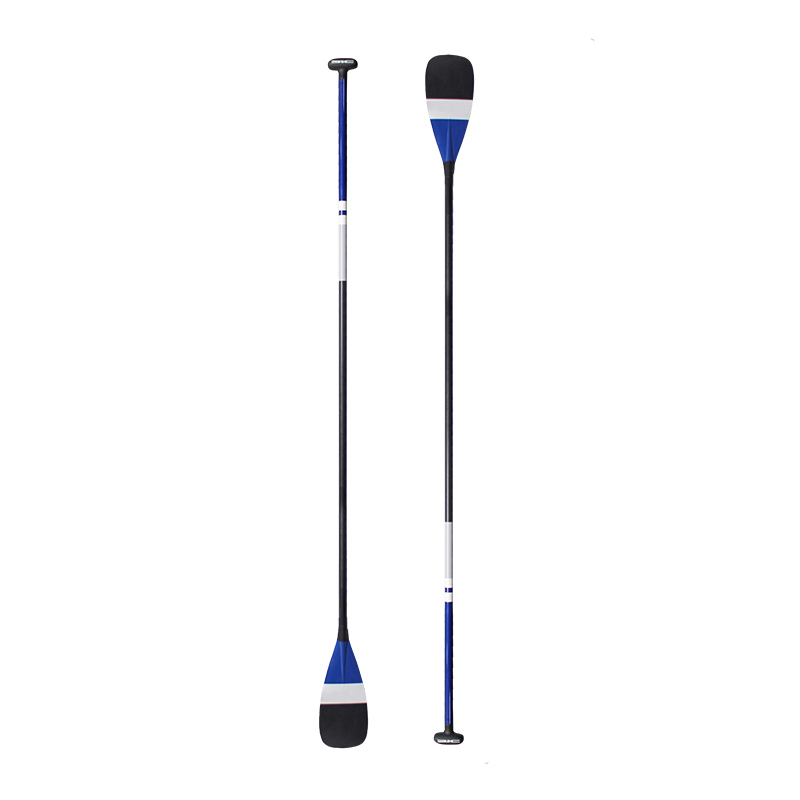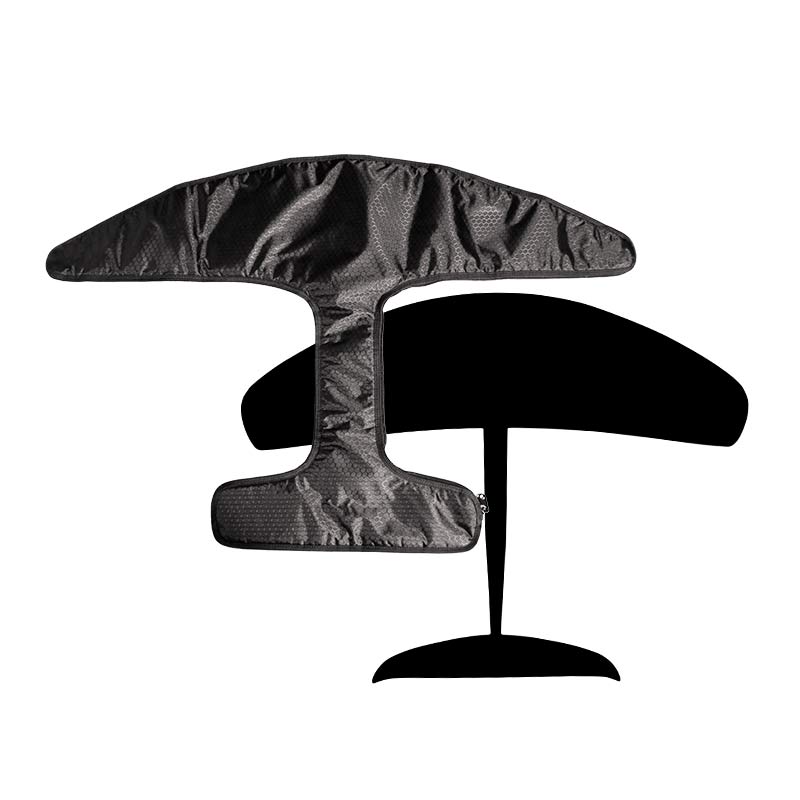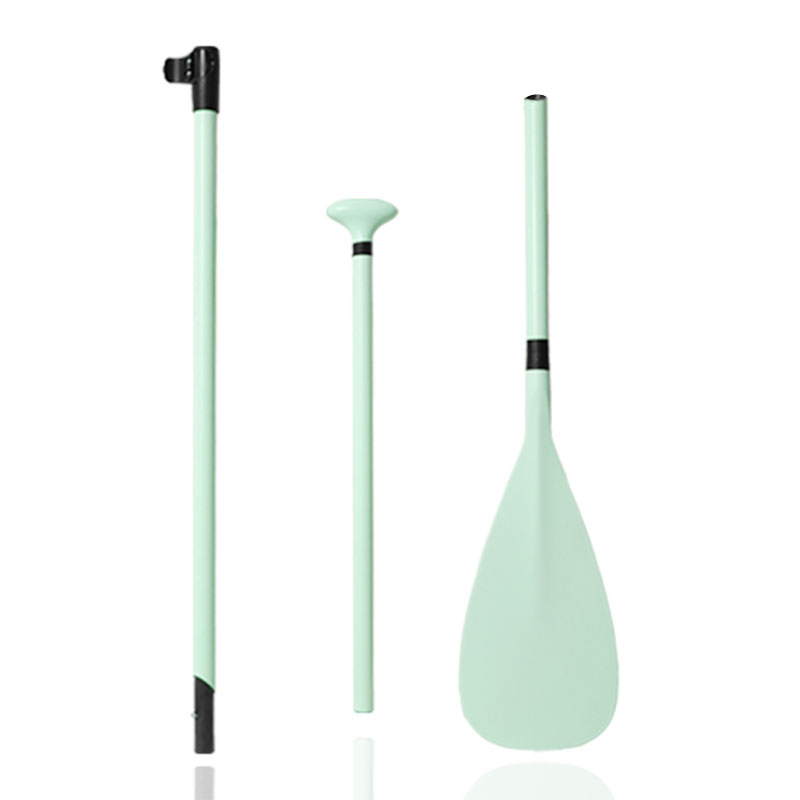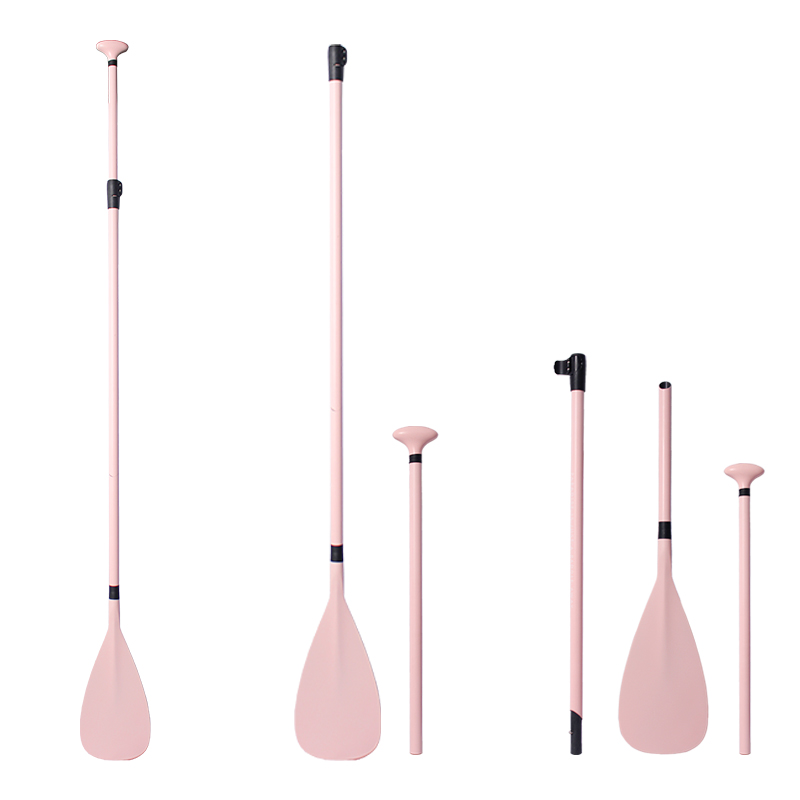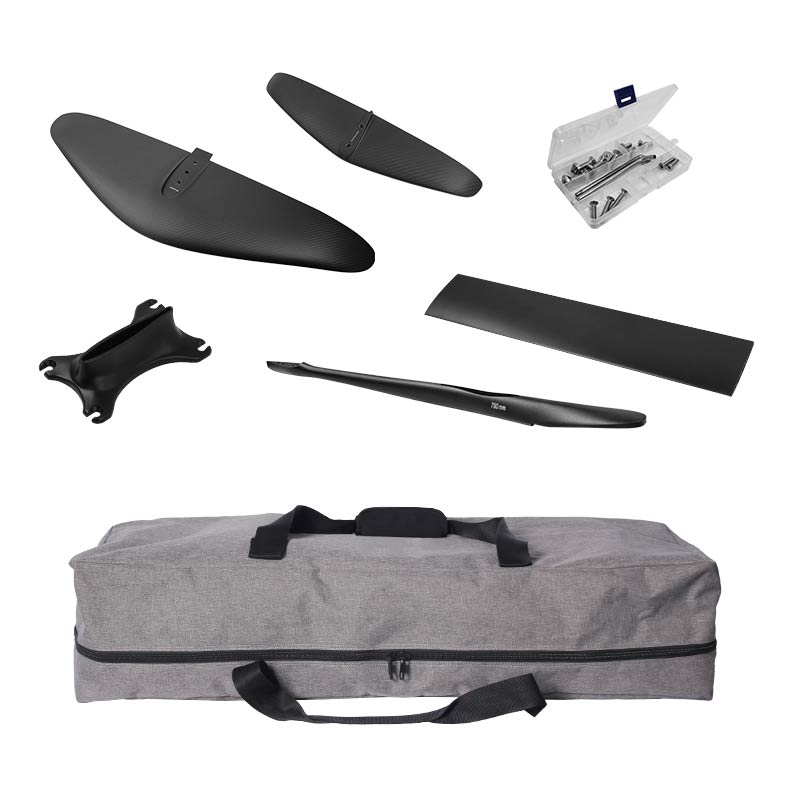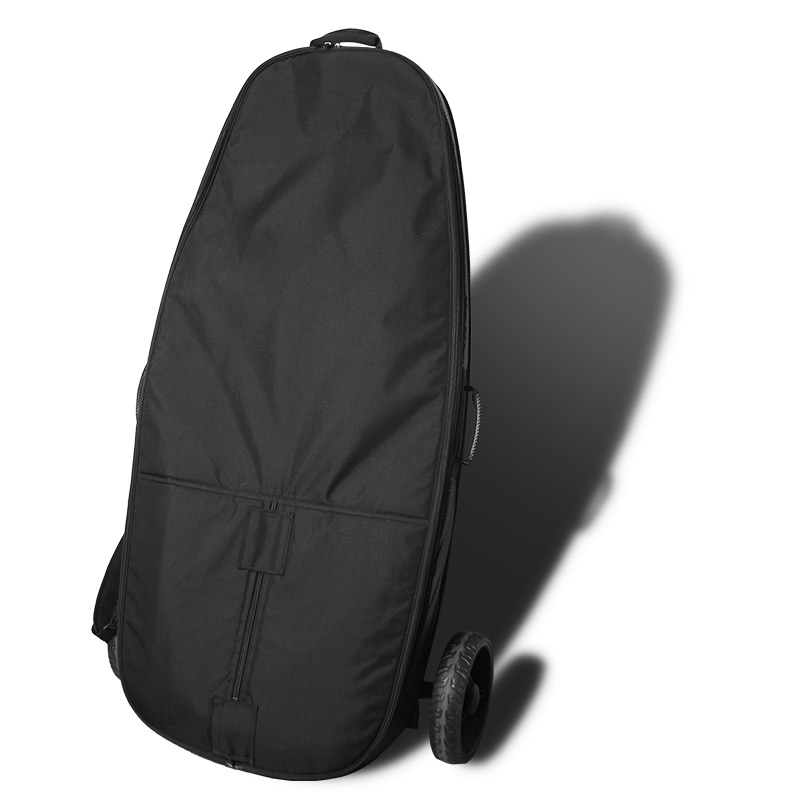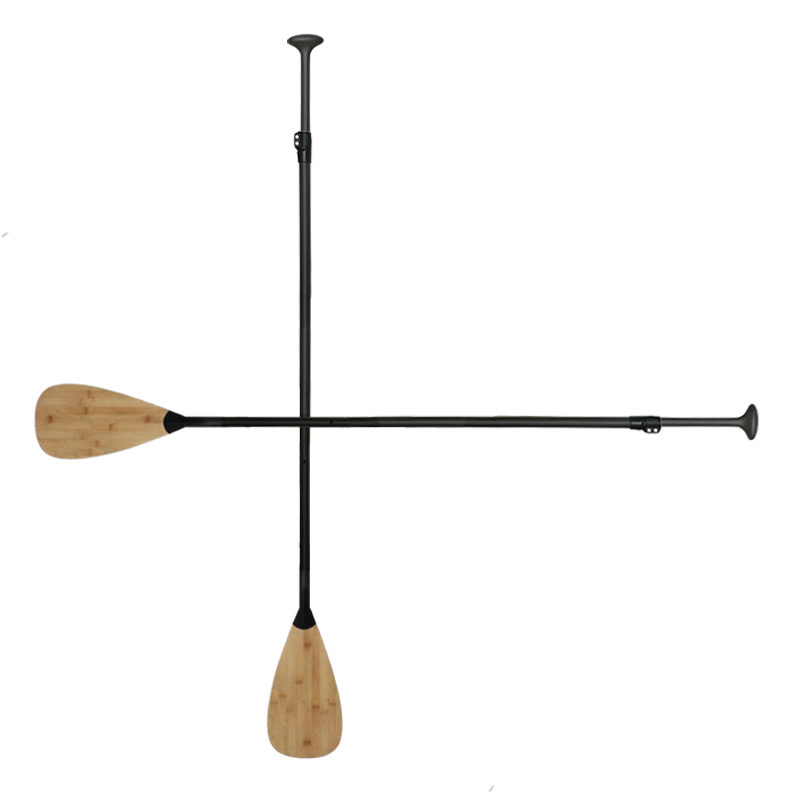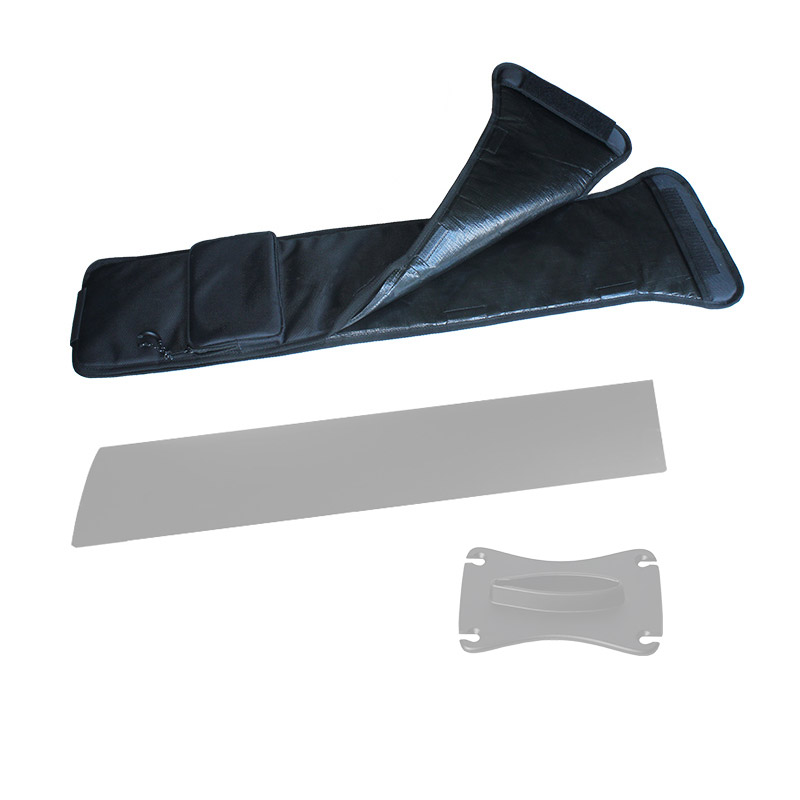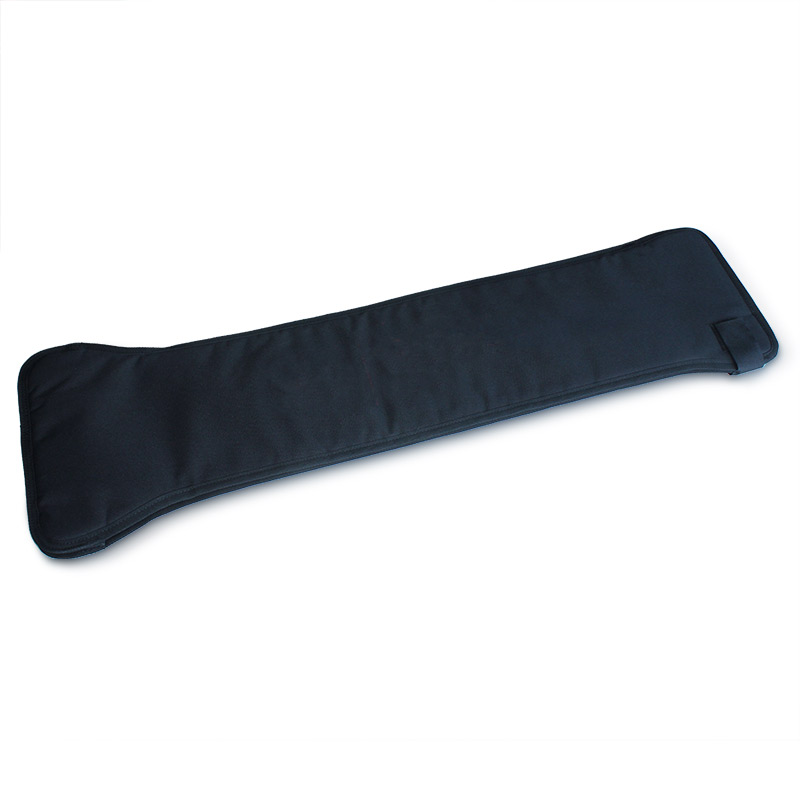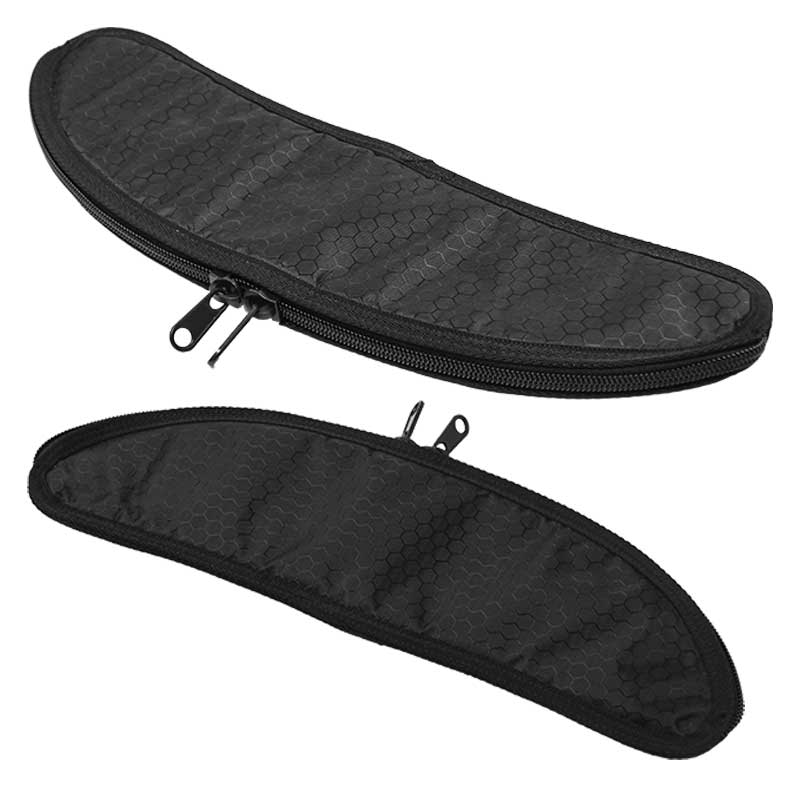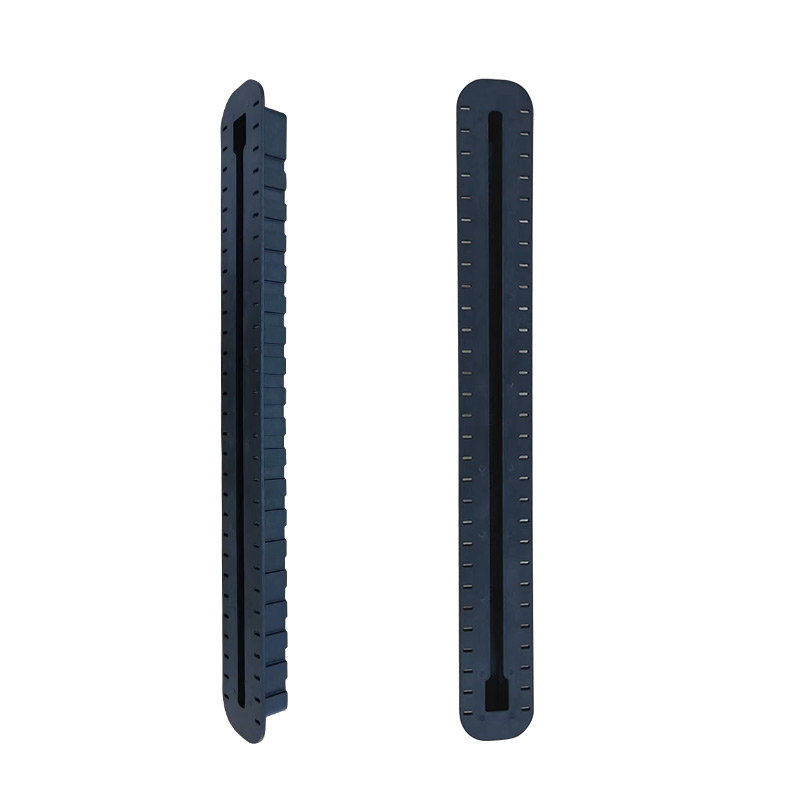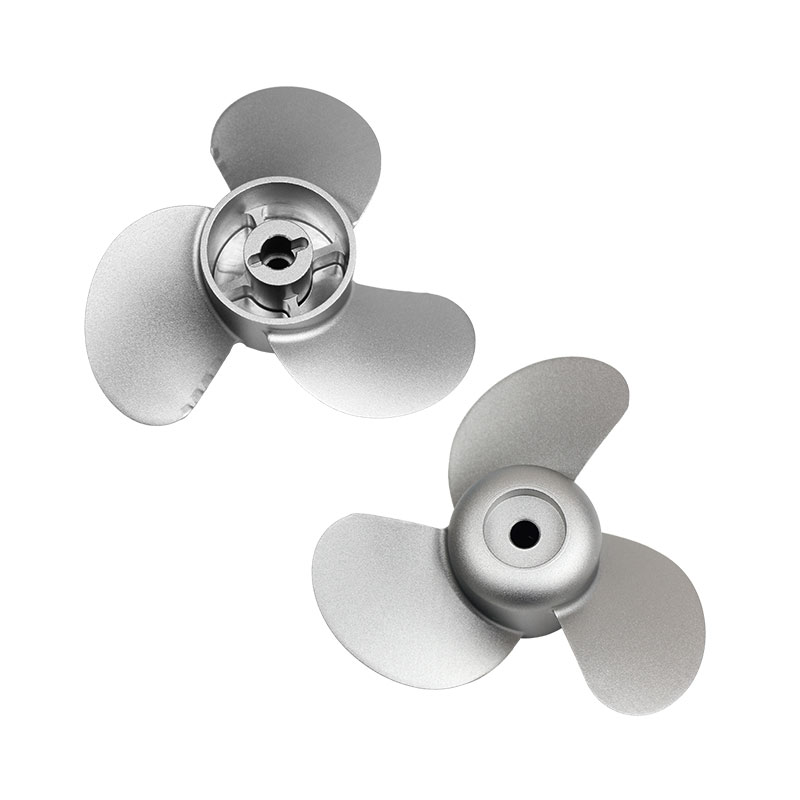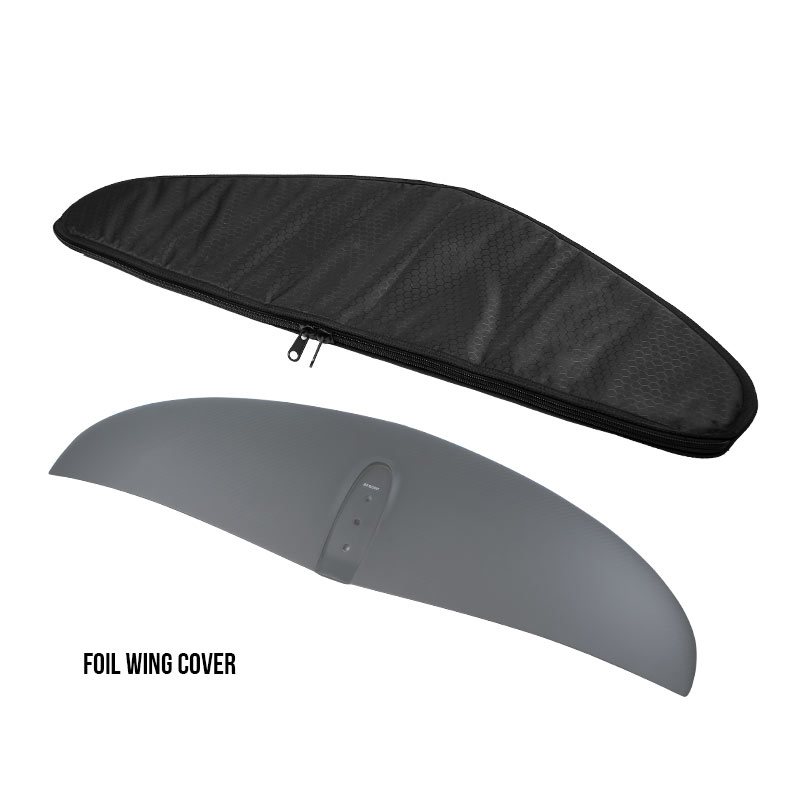Foil drive surf foiling combines the thrill of surfing with the futuristic glide of hydrofoiling, but mastering it requires technique, strategy, and the right gear. Whether you’re a beginner or looking to refine your skills, these surf foiling tips will help you ride smoother, safer, and longer.
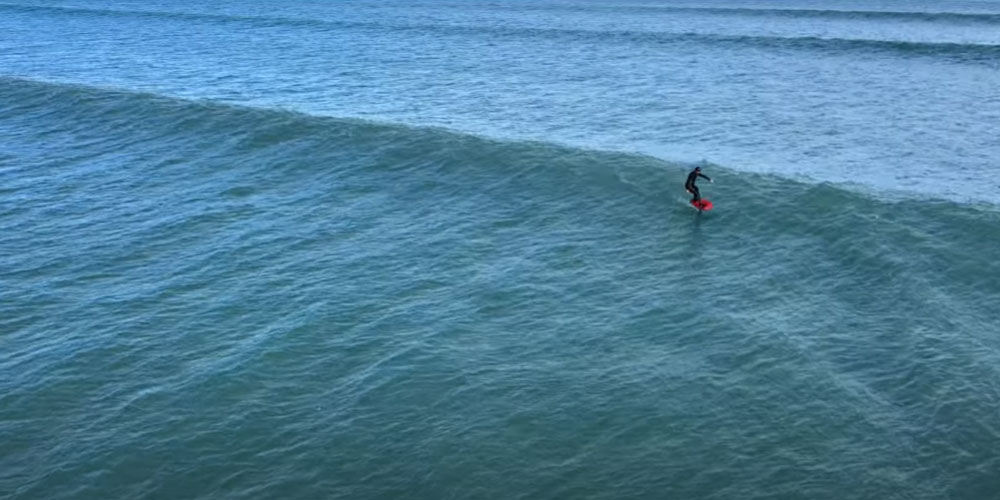
1. Set Yourself Up for Success
Before hitting the water, ensure your equipment is dialed in to avoid any unexpected issues during your session is one of the basic foil assist surf foiling tips. The key to a smooth ride starts with thorough preparation.
Tighten propeller bolts:
Ensure the propeller bolts are securely tightened. This simple step prevents the risk of losing your propeller mid-ride, which could not only ruin your session but also cause damage to your equipment. Applying battery grease to your connections also helps prevent corrosion, ensuring the longevity of your electrical components and the battery’s efficiency.
Check nose cone seals:
The nose cone of your board is a crucial part of the setup. Inspect the seals carefully to avoid water ingress into the motor pod. Water entering this area can lead to malfunctioning of your motor and other electrical parts, compromising performance and safety. Regular checks here can save you from costly repairs or, worse, having to call it a day early.
Opt for lightweight setups:
Whether you’re using an integrated mast like the No Limits V2 M, or any other lightweight setup, consider how weight affects your maneuverability. Lighter setups not only provide better handling and control but also reduce fatigue, especially on longer rides. Being able to easily shift your weight and make quick adjustments can make a huge difference in the overall experience.
Ensure proper battery charge and connection
Always check your battery’s charge level before going out. An undercharged battery not only limits your session time but could also lead to unexpected power loss in the middle of your ride. A quick visual inspection of your battery connections and wires ensures everything is in place, preventing any interruptions while you’re out on the water.
Assess water conditions
Checking the current weather and water conditions before you head out is also an important surf foiling tip. Wind speed, water temperature, and wave heights all influence your performance. Understanding these factors and adjusting your expectations and ride style accordingly will enhance both safety and enjoyment.
As Paul from Foil Drive Surfing emphasizes, “A quick gear check avoids mid-session disasters.” Taking a few extra minutes to go over your setup before you hit the water can make all the difference. This simple routine allows you to focus on the ride itself, knowing your gear is in top condition and you’re prepared for any situation.
If you want to custom a foil assist, welcome to contact us for more details.
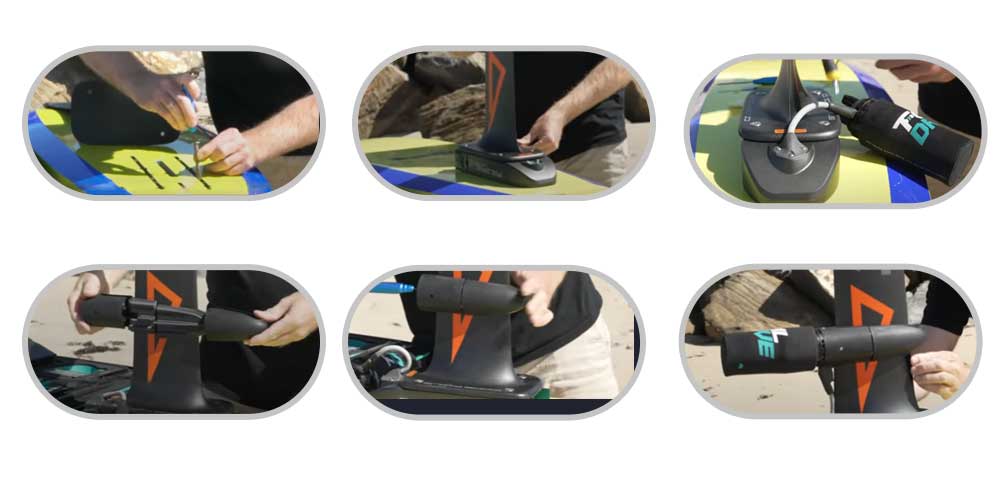
2. Mastering Takeoffs: From Prone to Foiling
Mastering the takeoff is one of the most crucial skills when it comes to eFoiling. Whether you’re riding a compact board or a larger one, understanding the techniques and nuances of transitioning from prone to foiling can significantly improve your performance and enjoyment. One of the key strategies involves using wave energy efficiently, especially with smaller boards.
The J Turn Technique for Small Boards
If you’re riding a compact board like the Jimmy Lewis 411, the J Turn surf foiling tip is a game-changer to harness wave energy effectively. This maneuver is especially beneficial when you’re aiming to conserve energy, maintain control, and maximize the lift generated by the wave.
-
Approach the wave as if catching it: When you’re paddling towards the wave, position yourself as though you’re about to catch it. This means facing the wave head-on and aligning your board parallel to the approaching swell.
-
Sharply turn away at the last moment: Just before the wave hits, execute a sharp turn to the side. The sharpness of this turn is key to creating a “J” shape with your movement. By doing this, you effectively leverage the power of the wave without trying to ride it directly.
-
Let the passing wave generate lift under your wing: As the wave moves past you, the energy from the swell will help generate lift under the wing of your board. This lift provides the necessary boost to start lifting you off the water without relying solely on the motor.
-
Engage the motor smoothly: After generating lift from the wave, engage the motor smoothly to pop onto the foil. This transition from wave power to motor power allows you to maintain speed and balance while effortlessly gliding above the water.
This trick works exceptionally well with small boards paired with high-lift wings such as the Code 850s, which provide extra lift to make the transition to foiling more efficient and stable.
Prone Takeoff Foil Surfing Tips
For many riders, starting in a prone position is the most stable and controlled way to begin their ride. Here are some foil assist surfing tips to help you achieve a seamless takeoff while riding in the prone position.
-
Keep the nose down while paddling to maintain stability: As you paddle out and position yourself for the takeoff, keep the nose of your board slightly pointed downward. This reduces the risk of nosediving and helps maintain better control over your board’s trajectory. A slightly downward nose also aids in keeping the board steady as you prepare to take off.
-
Use minimal throttle (60-65%) to avoid surging: When you engage the motor, it’s important not to throttle too aggressively. A gentle throttle at around 60-65% allows you to accelerate gradually without creating an overwhelming surge of power that might throw off your balance or make the board difficult to control.
-
Stand up gradually while shifting weight forward: As you begin to rise and transition into a standing position, shift your weight forward to help lift the board onto the foil. Standing up too quickly or too abruptly can result in the board tipping over or losing stability. Take your time to rise smoothly, ensuring your weight is well-distributed to maintain balance and smooth progression.
Mastering the prone takeoff, along with techniques like the J Turn, makes the process of foiling more efficient, allowing you to ride longer and with greater control. By practicing these skills, you’ll improve your ability to navigate different water conditions and handle your board with precision. The combination of understanding wave dynamics and refining takeoff techniques is crucial to advancing your eFoiling journey.
When riding waves on your eFoil, the key to a smooth, efficient, and enjoyable experience is mastering control and wave strategy. This involves knowing how to avoid problematic zones, like whitewater, and using techniques that allow you to ride longer and more smoothly without depending too heavily on the motor. Here’s how to make the most of your wave rides.
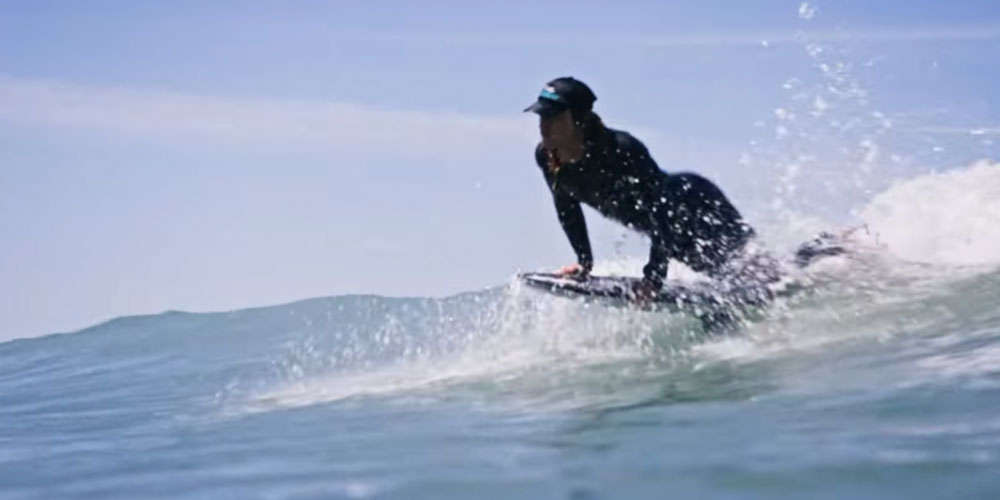
Avoid Whitewater Zones
Whitewater zones are often chaotic and pose several risks to your ride. Not only do they create turbulence, but they can also throw off your balance and disrupt the flow of your session. To stay in control, it’s essential surf foiling tip to know when and how to avoid them.
-
Peel off early before waves break: As a wave approaches, it’s important to gauge when it will break. If you wait too long, you risk getting caught in the turbulence of the whitewater. Instead, aim to peel off early, exiting the wave before it starts to break. This allows you to ride the wave without being caught in its chaos, helping you maintain smoother control throughout your session.
-
Ride the wave’s shoulder for smoother energy: Instead of riding directly in the peak of the wave, which can be unpredictable and rough, try riding along the shoulder of the wave. This part of the wave tends to have smoother, more consistent energy, giving you a more stable and controlled ride. Riding the shoulder lets you stay in the pocket of the wave without dealing with the unpredictability of the breaking section.
-
Absorb chop by bending your knees like shock absorbers: Waves and chop can cause your board to bounce or jolt unexpectedly, making it difficult to maintain control. One way to absorb the impact of these changes in motion is by keeping your knees slightly bent, acting like natural shock absorbers. This reduces the strain on your body and board, allowing for smoother transitions over rougher water conditions.
Diagonal Merging for Extended Rides
To maximize your time on the wave, the way you approach and ride it can make a big difference in your efficiency and ride duration. Instead of heading directly toward the wave, approaching it at an angle will allow for smoother transitions and longer rides.
-
Approach waves at an angle to extend your ride time: Instead of charging straight into the wave, approach it diagonally. This allows you to utilize the momentum of the wave to carry you further, rather than constantly battling to stay on top of it. A diagonal approach also helps maintain a steady speed, ensuring that you don’t slow down too quickly or get caught in the crest of the wave.
-
Use wave momentum to maintain speed without over-relying on the motor: The natural momentum of the wave is your best friend when it comes to conserving energy and extending your ride. Rather than relying too heavily on the motor to keep speed, focus on utilizing the wave’s energy. This will not only extend the life of your battery but also allow you to ride longer, enjoying the fluidity and natural rhythm of the wave.
4. Duck Diving with Motor Foil Assist
Paddling out through breaking waves can be one of the more challenging aspects of foil surfing. The combination of wave energy, chop, and the dynamics of your board can make it difficult to get past the break without losing momentum or balance. However, using the right surf foiling tips can help you save energy, maintain control, and ensure a smooth journey through the waves. Here’s how to do it efficiently:
Flatten the Board and Grip the Fuselage
When you’re preparing to paddle out through breaking waves, start by flattening the board. This position allows the board to ride more evenly on the water, making it easier to maintain balance as you navigate through waves. Additionally, grip the fuselage of your board with one hand. This provides extra control over your setup, helping you steer and maintain a steady line as you approach the breaking waves. By gripping the fuselage, you can also anticipate and manage the tilt of the board, making your paddling out more controlled.
Push the Nose Underwater While Giving a 20% Throttle Boost
As you approach a breaking wave, the next step is crucial for maintaining momentum. Push the nose of your board underwater just as the wave begins to break. By doing this, you avoid getting caught in the turbulence created by the breaking wave. At the same time, give your board a 20% throttle boost to maintain forward momentum without over-relying on the motor. This combination of pushing the nose under the wave and applying a small boost of throttle helps you glide beneath the wave smoothly without losing speed or balance.
Glide Under the Wave and Resurface Smoothly
Once your board’s nose is submerged and the throttle is engaged, glide smoothly under the wave. This technique allows you to stay below the breaking wave and avoid getting hit by the whitewater, which can disrupt your rhythm. As you glide under the wave, keep your body position steady and focus on maintaining balance. Once you’re beneath the wave, gradually resurface smoothly, ensuring that the board comes up gently without being jostled. This technique minimizes the disruption caused by the waves and helps you continue paddling out with minimal energy expenditure.
Why This Foil Surfing Tip Works
This foil surfing tip is incredibly efficient for conserving energy and reducing strain while paddling out. By flattening the board, using minimal throttle, and gliding beneath the waves, you’re conserving your battery and making your paddling out a lot less exhausting. This method also has the added benefit of keeping your microphone dry if you’re filming, allowing you to capture the action without worrying about water splashes interfering with your equipment.
Ultimately, using this technique saves you both energy and effort, ensuring that you can paddle out more efficiently and keep your session going for longer.
5. Throttle Management: Smooth Transitions
Throttle management is key to ensuring smooth and controlled rides, particularly when transitioning between wave riding and flat water. Maintaining the right throttle input can prevent power surges, improve battery life, and make the overall ride more enjoyable.
Pre-Spool for Seamless Re-Entries
When transitioning from wave riding back to flat water, it’s important to smoothly re-engage the motor. To do this, pre-engage the motor at 60% throttle before dropping the pod back in the water. This ensures that the motor is ready to assist you when needed, making the re-entry smoother and more efficient.
-
Gradually Increase Power: Sudden throttle surges can cause unnecessary jerks, making the ride less stable and harder to control. Gradually increase the power after you re-enter the water to avoid aggressive surging and keep the motion fluid.
-
Avoid Air-Ratcheting: Air-ratcheting happens when the motor is not properly submerged, causing it to lose thrust and waste battery. Always ensure the motor stays submerged for consistent power delivery.
-
Listen for the “Whining” Sound: If you hear a “whining” noise, it means the propeller is out of the water. This indicates a loss of efficiency and wasted battery power. Always monitor the sound to avoid running your battery down faster than necessary.
Key Takeaways for Throttle Management
Throttle management is not just about power, but also about maintaining control. By following these simple tips, you can avoid wasting battery and improve your overall efficiency on the water.
6. Advanced Maneuvers: Turns and Speed Control
Mastering advanced maneuvers is a surf foiling tip that requires precise control over the board, foil, and motor. Whether you’re navigating choppy waters or pulling off high-speed turns, it’s important to balance speed, control, and safety.
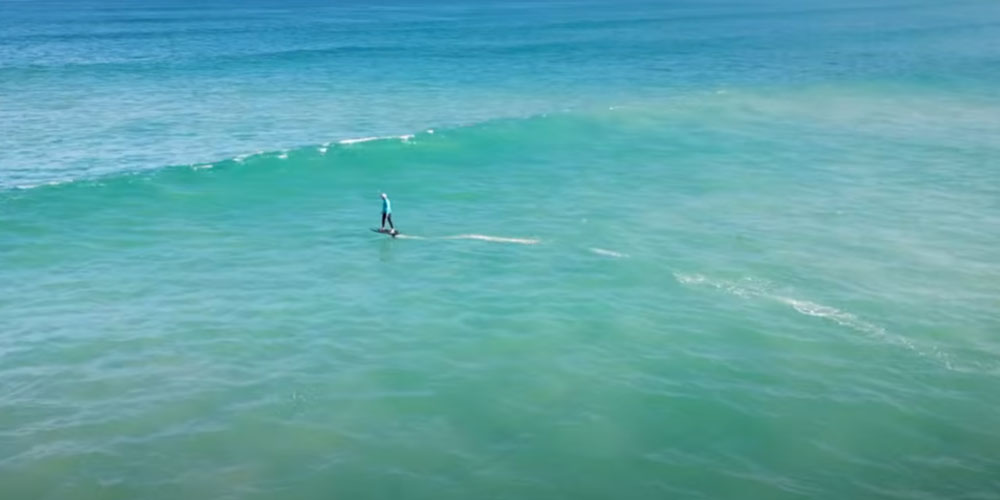
Shallow Peeling for Safety
When you’re using the foil assist turning off waves or performing sharp maneuvers, it’s crucial to approach at a shallow angle. Turning off waves at a shallow angle helps to reduce turbulence and maintain control over the board, especially when cutting through larger swells or waves.
-
Maintaining Control During Turns: During the turn, it’s essential to lean slightly back to keep the foil engaged with the water. Leaning back prevents the board from digging too deep and losing speed. This will help maintain balance and reduce the risk of falling.
-
Safety First: Sharp turns at steep angles can lead to instability, so always ensure you’re executing your turns with smooth, controlled movements. Keeping your weight balanced and your body aligned with the board will make the maneuver safer and more efficient.
Pumping Through Chop
When facing rough waters or chop, the key to maintaining stability is using your legs to pump through the water. Pumping helps to stabilize the foil and maintain forward momentum without losing control.
-
Stay Low for Stability: By staying low to the water, you help to keep the wing engaged, which reduces the likelihood of breaches (when the foil comes out of the water). A lower position provides more stability, especially when navigating through rough patches or choppy water.
-
Timing Your Pumps: Pump your legs at the right moments to keep the board moving forward. The goal is to stabilize the foil and maintain consistent speed while navigating through chop.
Key Takeaways
In advanced maneuvers, the combination of controlled turns and pumping through chop ensures a smooth and controlled ride, even in challenging conditions. The surf foiling tip key is staying balanced and adjusting your body position to maintain proper foil engagement and speed.
7. Safety and Etiquette
Safety and proper etiquette are essential for ensuring an enjoyable experience for everyone on the water. Whether you’re riding a foil or a traditional surfboard, respecting others and following basic safety rules can prevent accidents and help you have a better time.
Respect the Lineup
In crowded surf spots, being respectful of others is key to maintaining a harmonious atmosphere.
-
Avoid Crowded Areas: One of the major advantages of foiling is the ability to cover more distance. Use this to your advantage by finding breaks that aren’t as crowded. This allows you to have a more enjoyable session while avoiding any potential conflicts with other surfers.
-
Yield to Traditional Surfers: Respect for traditional surfers is important, as they may be more experienced with wave dynamics. Yielding to them by giving priority helps maintain peace in the lineup and keeps everyone safe.
Motor Safety
Handling your motor safely is crucial for avoiding accidents, especially when you’re entering or exiting the water.
-
Turn Off the Controller: Always turn off the controller when entering or exiting the water. This ensures that the motor doesn’t accidentally engage and cause unintended propulsion, which could lead to injury.
-
Never Walk with a Live Motor: Walking around with a live motor is dangerous. Accidental throttle pulls can happen if the controller is not properly secured, potentially causing injury. Always make sure the motor is off before handling or walking with the equipment.
Respecting the lineup and handling your motor with care not only ensures your safety but also contributes to a respectful and enjoyable environment for all water users. Follow these basic guidelines to keep your sessions smooth and free from unnecessary conflicts.
8. Gear Recommendations for Surf Foiling
Choosing the right gear is vital for a smooth and successful foil drive surf foiling experience. Whether you’re just getting started or are looking to refine your skills, the proper setup can make all the difference.
Board and Wing Pairing
The right pairing between board and wing is essential for optimizing your surf foiling tip performance. Consider the size and power of your equipment based on wave conditions and your skill level.
-
Small Boards: Small boards, like 4’11” models, are best paired with high-power motors (e.g., 850W). These boards are agile and responsive, but they require a more powerful motor to keep you afloat, especially in smaller or slower waves.
-
Larger Wings: Larger wings, such as the Code 850, are ideal for providing lift in mushy or less powerful waves. These wings help maintain speed and stability when the waves aren’t as steep or powerful, allowing you to stay engaged with the water and continue foiling.
Battery Tips
Battery life is an important factor when it comes to maximizing your session time. Efficient power usage can help you get the most out of each ride.
-
Maximize Runtime: Avoid unnecessary throttle spikes to conserve battery life. Smooth and consistent throttle control helps keep the motor running efficiently without draining the battery too quickly.
-
Use Foil Drive Gen 2 Systems: Generation 2 systems are designed for smoother power delivery, which not only improves the overall ride quality but also extends battery life, giving you longer sessions without the need for frequent recharging.
By selecting the right board and wing pairing, as well as using efficient battery management, you can optimize your surf foiling experience. The right gear choices will allow you to ride longer, perform better, and enjoy your sessions even more.
Summary: Surf Foiling Tip
Foil drive surf foiling combines the excitement of traditional surfing with the futuristic glide of hydrofoiling, offering a unique experience that requires both skill and the right gear. Mastering the surf foiling tips involved—whether you’re a beginner or aiming to refine your skills—can make all the difference in ensuring a smoother, safer, and longer ride. Key tips for success include carefully preparing your equipment, mastering takeoff techniques like the J Turn, avoiding whitewater zones, managing your throttle for smoother transitions, and practicing advanced maneuvers like shallow peeling and pumping through chop. Coupled with proper safety etiquette and gear recommendations, these strategies help riders stay in control, conserve energy, and make the most of their sessions on the water.

